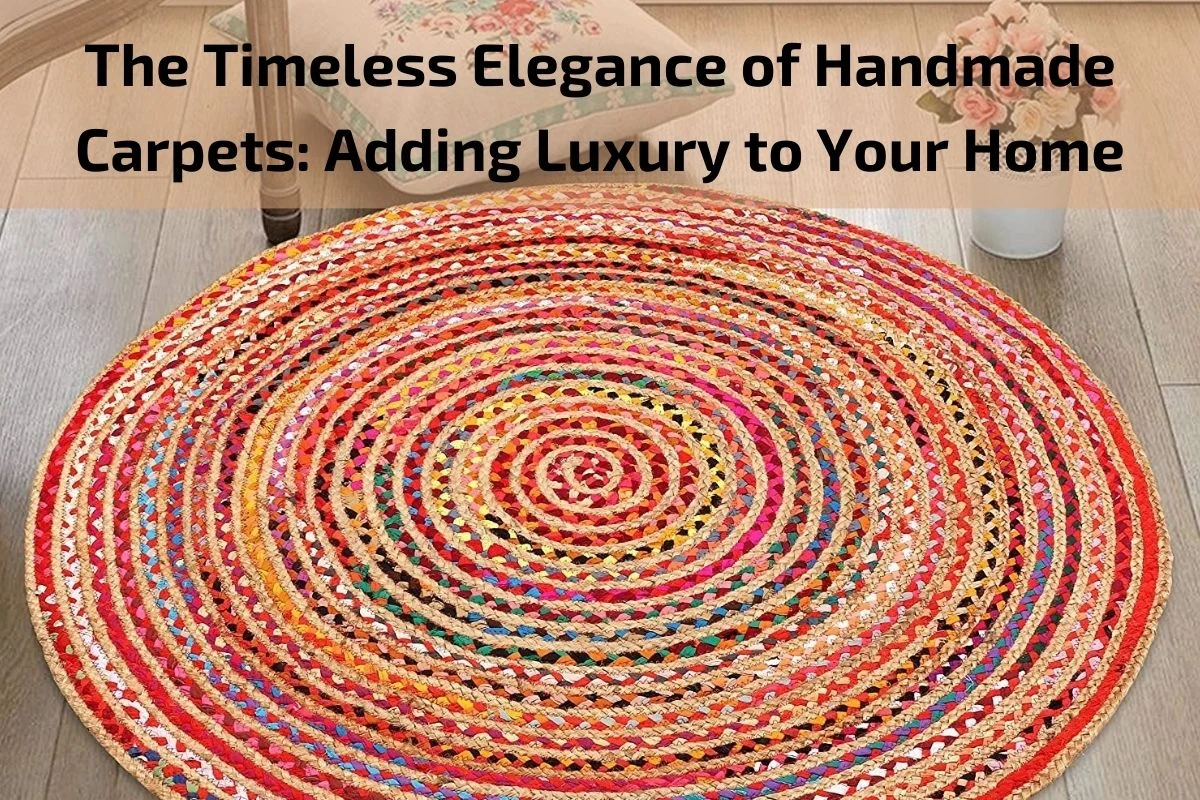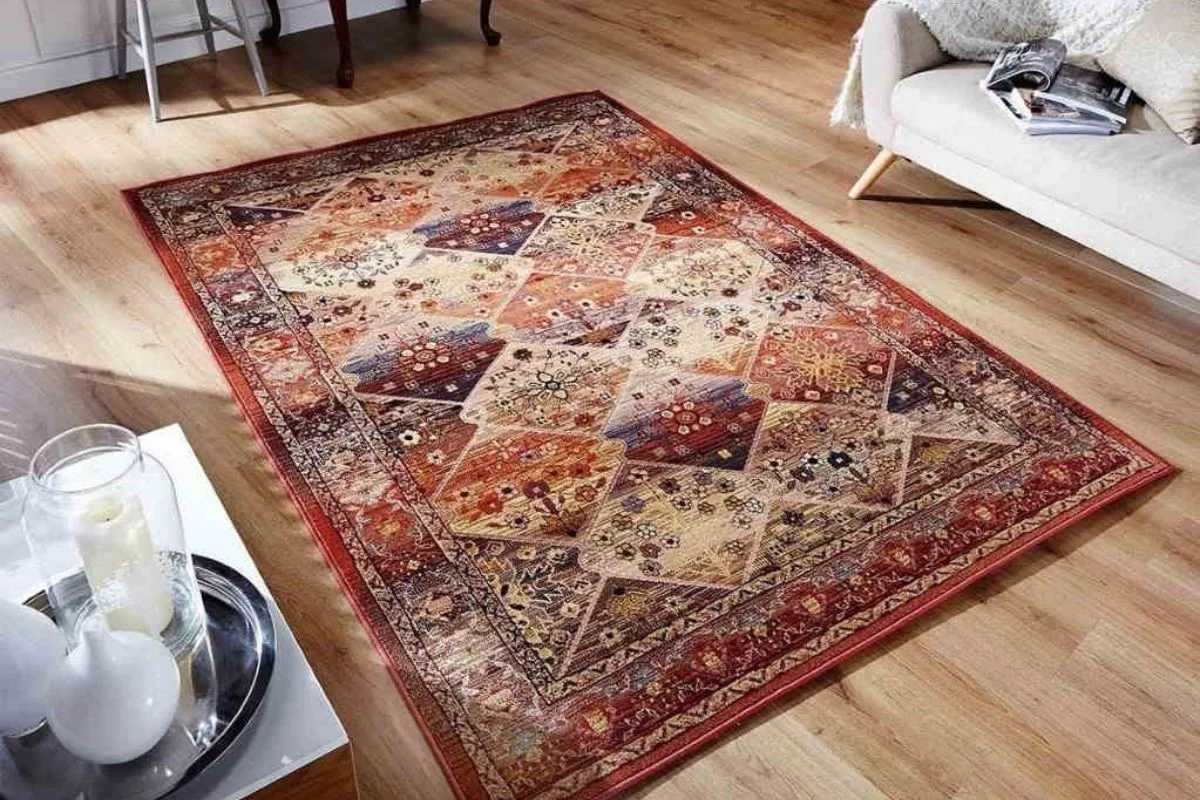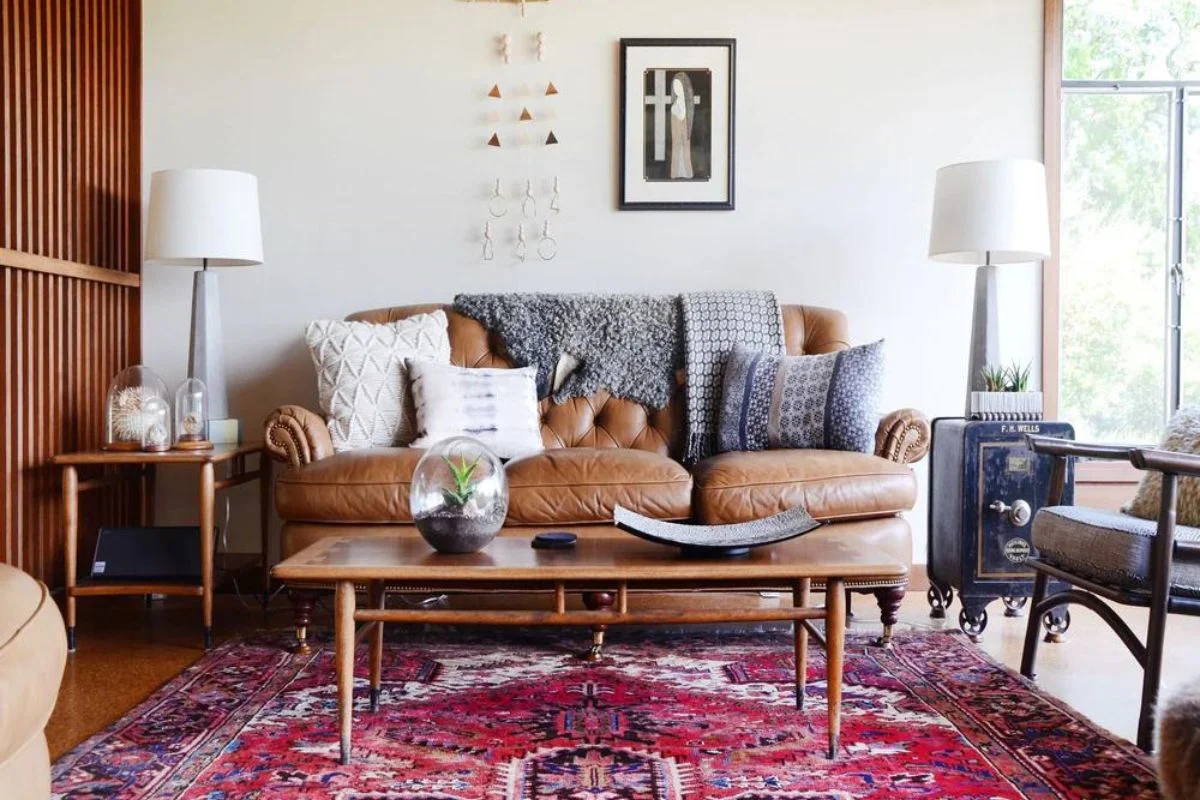
In the realm of interior design, few elements possess the timeless elegance and exquisite craftsmanship of handmade carpets. These artisanal treasures, woven with meticulous care and imbued with centuries of tradition, have long been revered for their ability to transform living spaces into havens of luxury and sophistication.
Handmade carpets are more than mere floor coverings; they are masterpieces of artistry and culture, each bearing the indelible imprint of the skilled hands that brought them to life. From the ancient weaving traditions of Persia to the vibrant tapestries of Morocco, handmade carpets encapsulate the rich tapestry of human history and creativity.
In today’s fast-paced world, where mass production reigns supreme, handmade carpets stand as a testament to the enduring allure of craftsmanship and the timeless appeal of heirloom-quality furnishings. Their intricate patterns, rich colors, and sumptuous textures serve as focal points that elevate the ambiance of any room, infusing it with warmth, character, and refinement.
Brief overview of handmade carpets
A brief overview of handmade carpets reveals their rich history and intricate craftsmanship. Handmade carpets, also known as hand-knotted rugs, are crafted using traditional weaving techniques passed down through generations. Each carpet is meticulously created by skilled artisans who intricately weave individual knots to form intricate patterns and designs.
These carpets are made from various natural fibers, including wool, silk, and cotton, sourced from local environments, adding to their authenticity and durability. Handmade carpets are renowned for their exceptional quality, attention to detail, and timeless beauty, making them cherished heirlooms passed down from one generation to the next.
The production of handmade carpets is a labor-intensive process that often involves months, if not years, of meticulous work. Artisans pour their passion and expertise into every knot, resulting in carpets that are not only functional floor coverings but also works of art that adorn homes and spaces with elegance and charm.
From the vibrant hues of Persian carpets to the geometric motifs of Moroccan rugs, handmade carpets reflect the cultural heritage and artistic traditions of the regions where they are crafted. They serve as cultural artifacts that tell stories of civilizations, traditions, and craftsmanship that have endured through centuries.
In today’s world, handmade carpets continue to captivate homeowners, interior designers, and collectors alike, offering a timeless allure that transcends trends and styles. Their beauty, craftsmanship, and enduring quality make them prized possessions that add warmth, character, and sophistication to any interior space.
Importance and allure of handmade carpets in interior design
The importance and allure of handmade carpets in interior design are undeniable, as these exquisite pieces not only serve as functional floor coverings but also elevate the aesthetic appeal and ambiance of any space. Here are several reasons why handmade carpets hold such significance in interior design:
Timeless Elegance: Handmade carpets exude a timeless elegance that transcends trends and styles. Their intricate patterns, vibrant colours, and luxurious textures add depth and character to any room, creating a sense of sophistication and refinement.
Unique Artistry: Each handmade carpet is a unique work of art, meticulously crafted by skilled artisans using traditional weaving techniques passed down through generations. The artistry and craftsmanship invested in every knot and fiber imbue handmade carpets with a sense of authenticity and cultural heritage.
Versatile Design Element: Handmade carpets are incredibly versatile design elements that can complement a wide range of interior styles, from traditional and classic to modern and contemporary. They serve as focal points that anchor the overall design scheme and tie together various elements within a space.
Warmth and Comfort: Handmade carpets add warmth and comfort to living spaces, both visually and physically. The softness underfoot and the cozy ambiance created by handmade carpets make them inviting additions to living rooms, bedrooms, and other gathering areas in the home.
Acoustic Benefits: Handmade carpets also offer acoustic benefits by absorbing sound and reducing noise levels within a room. This makes them ideal for spaces where noise control is important, such as offices, libraries, and media rooms.
Investment Value: Handmade carpets are not just decorative accents; they are also valuable investments that can appreciate in value over time. Antique and collectible handmade carpets, in particular, can command high prices in the market, making them sought-after pieces for collectors and connoisseurs.
Sustainability: Handmade carpets are often crafted from natural fibers such as wool, silk, and cotton, making them environmentally friendly and sustainable choices for eco-conscious homeowners. The use of natural materials also contributes to the durability and longevity of handmade carpets.

Exploring Different Types and Styles of Handmade Carpets
Persian Carpets: Renowned for their intricate designs, Persian carpets originate from Iran and feature elaborate motifs, floral patterns, and rich colors. These carpets often represent centuries-old weaving traditions and cultural heritage.
Oriental Carpets: Oriental carpets encompass a wide range of styles from countries such as Turkey, Afghanistan, Pakistan, and India. They are characterized by bold geometric patterns, intricate borders, and vibrant color palettes that reflect the diverse artistic traditions of the region.
Turkish Carpets: Turkish carpets are prized for their exquisite craftsmanship and distinctive motifs, including medallions, geometric shapes, and floral patterns. These carpets often feature vibrant hues and luxurious textures, making them sought-after collector’s items.
Moroccan Carpets: Moroccan carpets, also known as Berber carpets, are handwoven by Berber tribes in North Africa. They are characterized by their simple yet striking designs, featuring geometric shapes, tribal motifs, and a minimalist aesthetic that adds a touch of bohemian charm to any space.
Kilim Rugs: Kilim rugs are flat-woven carpets traditionally made in countries such as Turkey, Iran, and Afghanistan. They feature bold geometric patterns, tribal motifs, and vibrant colors woven into the fabric using a technique known as the slit-weave method.
Tribal Carpets: Tribal carpets are handmade by nomadic tribes and indigenous communities using traditional weaving techniques passed down through generations. These carpets often feature unique motifs, symbols, and color combinations that reflect the cultural identity and heritage of the weavers.
Contemporary Carpets: Contemporary handmade carpets blend traditional craftsmanship with modern design aesthetics, resulting in innovative and eclectic styles that appeal to contemporary tastes. These carpets may feature abstract patterns, bold colors, and unconventional materials that push the boundaries of traditional carpet design.
Antique Carpets: Antique handmade carpets, typically dating back several decades or centuries, are prized for their historical significance, rarity, and craftsmanship. These carpets often command high prices in the collector’s market and are cherished as valuable heirlooms and investments.
Factors to Consider When Choosing a Handmade Carpet
Size, Shape, and Placement Considerations:
- Determine the dimensions of the space where the handmade carpet will be placed, considering factors such as room size, furniture arrangement, and traffic flow.
- Choose a carpet size and shape that complements the proportions of the room and allows for adequate space around furniture.
- Consider the placement of the carpet, whether it will serve as a focal point in the centre of the room or as a runner along a hallway or entryway.
Color Palette and Design Preferences:
- Consider the existing color scheme and decor style of the room when selecting a handmade carpet.
- Choose colors and patterns that harmonize with the overall aesthetic of the space while adding visual interest and depth.
- Experiment with different design elements such as motifs, borders, and textures to find a carpet that reflects your personal taste and complements the room’s ambiance.
Budget and Investment Considerations:
- Set a budget for purchasing a handmade carpet and research pricing ranges for different types, sizes, and qualities of carpets.
- Keep in mind that handmade carpets can vary significantly in price depending on factors such as materials, craftsmanship, and rarity.
- Consider the long-term investment potential of the carpet, as high-quality handmade carpets may appreciate in value over time and become cherished heirlooms.
Material and Construction Quality:
- Pay attention to the materials used in the construction of the handmade carpet, including the type of fiber (wool, silk, cotton) and the quality of dyes and finishes.
- Inspect the construction of the carpet, looking for even weaving, tight knots, and durable edges that indicate skilled craftsmanship and attention to detail.
- Consider the durability and maintenance requirements of different materials, opting for natural fibers that are resilient and easy to clean.
Cultural and Ethical Considerations:
- Learn about the cultural heritage and significance of the handmade carpet, including the weaving traditions, motifs, and symbols associated with its origin.
- Consider the ethical implications of purchasing a handmade carpet, ensuring that it was produced using fair labor practices and sustainable methods.
- Support artisans and communities that uphold traditional weaving techniques and contribute to the preservation of cultural heritage.

Maintaining and Caring for Handmade Carpets
Regular Cleaning and Maintenance Routines:
- Vacuum handmade carpets regularly to remove dust, dirt, and debris that can accumulate in the fibers.
- Use a vacuum cleaner with a brush attachment or a gentle suction setting to avoid pulling or damaging the carpet fibers.
- Rotate the carpet periodically to ensure even wear and prevent uneven fading or discoloration.
Handling Spills and Stains Promptly:
- Blot spills immediately with a clean, dry cloth or paper towel to absorb as much liquid as possible.
- Avoid rubbing or scrubbing the spill, as this can spread the stain and damage the carpet fibers.
- Use a mild detergent diluted with water to gently dab the stained area, then blot with a clean cloth to remove excess moisture.
Professional Cleaning and Restoration:
- Consider professional cleaning for handmade carpets every 1-2 years, depending on the level of foot traffic and use.
- Hire a reputable carpet cleaning service that specializes in handmade carpets and uses gentle, non-toxic cleaning methods.
- Avoid steam cleaning or harsh chemicals, as these can damage the fibers and colors of the carpet.
Preventing Sun Damage and Fading:
- Protect handmade carpets from direct sunlight, as prolonged exposure can cause fading and discoloration.
- Use window treatments such as blinds, curtains, or UV-blocking films to filter sunlight and protect the carpet from UV rays.
- Rotate the carpet periodically to ensure that all areas receive equal exposure to sunlight and prevent uneven fading.
Avoiding Heavy Furniture and Traffic:
- Avoid placing heavy furniture directly on handmade carpets, as this can cause indentations and damage to the fibers.
- Use furniture pads or coasters under the legs of furniture to distribute weight evenly and prevent indentations.
- Minimize foot traffic on the carpet by placing rugs or runners in high-traffic areas and using carpet protectors under chair legs.
Regular Inspection and Maintenance:
- Inspect handmade carpets regularly for signs of wear, damage, or moth infestation.
- Trim any loose or frayed fibers with scissors to prevent them from unraveling and causing further damage.
Address any issues or concerns promptly to prevent them from escalating and causing irreparable damage to the carpet.
Conclusion
In conclusion, the allure and beauty of handmade carpets extend far beyond their function as mere floor coverings. These exquisite works of art embody centuries of tradition, craftsmanship, and cultural heritage, making them cherished treasures that adorn homes and spaces with elegance and charm.



